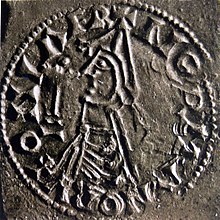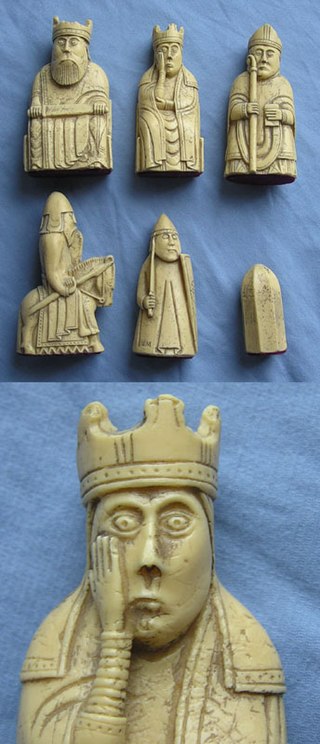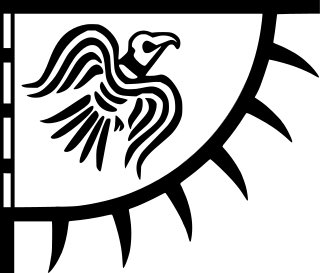Joint rule
With Sumarlidi and Einar

Joint earldoms were a frequent feature of the Norse earldom of Orkney and usually one of the partners was recognised as the senior figure, responsible for military activities. However, such arrangements were often unstable and the Orkneyinga saga is less than explicit about how these shares were divided up geographically. It is possible that Brusi's share, described as the "northernmost part of the isles", was those islands lying north of the Orkney mainland, that Einar's was originally the east Mainland and the south isles and that Sumarlidi's was the west Mainland. However, it is also possible that Brusi's share was Shetland, which formed part of the earldom throughout the Norse period. This possibility is supported by a later reference to his son Rögnvald as "Lord of the Shetlanders" and Thompson (2008) is in "no doubt " that Shetland was in Brusi's possession. [5] [Note 1] The Shetland island of Bressay may have been recorded in 1263 as Breiðoy (Old Norse "broad island"). However, in a 1490 document the island is referred to as Brwsøy - "Brusi's island" which name may indicate it was Earl Brusi's 11th century base. [7] [8]
Sumarlidi died in his bed not long after his father. [9] Einar took his share, ruling two-thirds of the Earldom with the remaining third held by Brusi. Einar soon became unpopular, demanding heavy taxes and frequent military service from the farmers, and gaining little booty on his raids. He was, the saga says, "a great bully", whereas Brusi was "well liked by everyone". [10]
With Einar and Thorfinn

Thorfinn was "greedy and ambitious" like Einar [12] and Brusi had to make peace between the two when Thorfinn grew to manhood, not once but twice. On coming of age Thorfinn asked for Sumarlidi's third from Einar but the latter refused. Both raised an army so Brusi also raised a force to come between them. He forged a peace treaty in which it was agreed that Thorfinn should get his third and that on the death of either of the other two brothers, the surviving one would inherit their share. [12] Thorfinn remained in Caithness and appointed stewards to look after his Orkney possessions. [Note 2] On one occasion he sent Thorkel Fosterer to collect his taxes but Einar drove him out of the islands back to Caithness. Thorfinn advised him to go to the court of King Olaf Haraldsson in Norway and subsequently Thorfinn was invited there too. They returned together in the summer of 1020 and landed in Orkney where they were met by Einar at the head of large armed force. Once again Brusi intervened and it was agreed that Einar and Thorkel would make peace and entertain one another to a feast. [12]

In October 1020 Einar attended Thorkel's hall at Hlaupandanes in Deerness in a sour mood. On the last day of the feast Thorkel was supposed to travel with Einar for the reciprocal event but the former's spies reported that ambushes were in place en route. Thorkel therefore delayed his departure, leaving Einar to wait for his arrival by the fire in his great hall. Thorkel arrived by stealth, walked into the hall with one of his men and they killed Einar. Thorkel then escaped to Norway. [11] [16] [18] [19]
With Thorfinn
When Brusi inherited Einar's third of the earldom Thorfinn was not pleased with this arrangement, and asked Brusi for a half share. [16] This Brusi refused. However, while Thorfinn could count on the aid of his maternal grandfather, Máel Coluim mac Cináeda, Brusi could rely only on his own resources. [20]
To find support Brusi went to Norway, to the court of King Olaf, to have the sharing out of the Earldom settled and Thorfinn followed him there. Olaf forced both of them to accept his overlordship and kept Einar's share for himself, (as reparation for Einar's murder of Eyvind Aurochs-horn) appointing Brusi to administer it, and kept Brusi's two-year-old son Rögnvald at his court. [16] [21] Brusi later gave control of Einar's third of the islands to Thorfinn in return for his seeing to the defence of Orkney and Shetland. [22] [23] The Heimskringla then tells that at this time, when King Olaf was defeated by Cnut the Great and exiled to Russia, that he was joined there by Rögnvald Brusason. [24] [25] Rögnvald later fought in the Battle of Stiklestad in 1030 where Olaf was killed. [24]
St Olaf's saga states that Brusi died at some point between the death of Olaf and before the close of Cnut's reign in 1035 [26] and the Orkneyinga saga that he had died before his son Rögnvald accompanied Magnus the Good back to Norway. [27]







